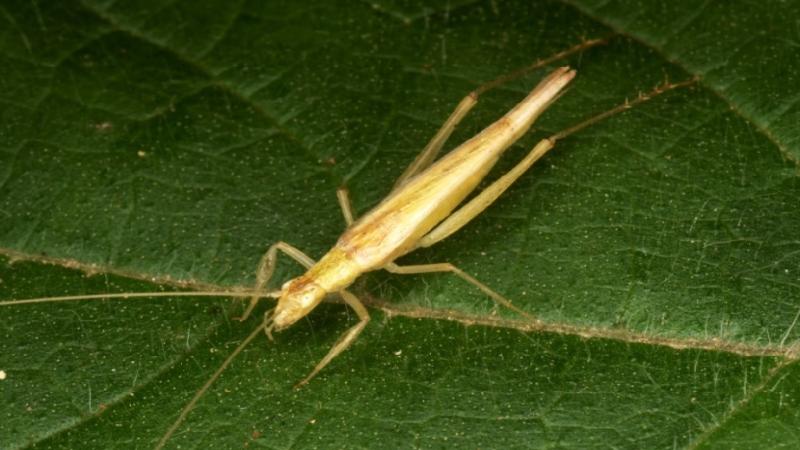
Image by Viraj Torsekar
Crickets are very vocal insects that bring our evenings to life with their loud, chirpy calls. Have you wondered who they are calling out to? They chirrup to communicate among themselves. They search for and woo their mates to ensure the continuation of their bloodline. But, their conspicuous signalling can increase the risk of predation. The calling males reveal their positions not only to females but also to predators lying in ambush, waiting for their next meal.
Predation can potentially cause behavioural changes in preyed animals. In a new study, researchers from the Indian Institute of Science (IISc), Bengaluru, set out to understand how the risk of predation affects the mate-searching behaviour in Oecanthus henryi, a species of tree cricket. The study was funded by the Department of Biotechnology and the Ministry of Human Resource Development, Government of India. It was published in the journal Royal Society Publishing Proceedings B.
“Mate-searching behaviour is primarily about males and females reducing space or distance between them so that they can form pairs. How predation risk complicates this spatial game was fascinating to us,” says Viraj R. Torsekar, the lead author of the study. He was a PhD student at IISc while conducting this research and is currently a postdoctoral researcher at the Hebrew University of Jerusalem, Israel.
Oecanthus henryi inhabit the dry scrublands of southern India, living and feeding on bushmint plants. They breed from February to April and August to November. Male crickets position themselves on bushes and call out to female crickets to advertise their willingness to mate. The females locate the males from their calls and move towards them. This movement towards the sound by the females is called ‘phonotaxis’. Neither the calling by males nor the response by females is universal, however. Some males wait in ambush close to the fairly-unmoving calling males, then intercept and mate with any approaching female.
During the breeding season between 2013 and 2017, the researchers carried out extensive field surveys and experiments to monitor how the tree crickets and green lynx spiders, their main predators, shared the same area. Through statistical analysis of this data, they found significant overlap in the space shared by the female crickets and calling male crickets as well as the spiders. While mating, the non-calling males, however, moved around freely and oriented themselves on bushes neighbouring the calling males, effectively avoiding the spiders. The crickets, in general, inhabited large bushes, which offered more food and also acted as a refuge from the predators. Irrespective of their sex and mate searching behaviour, the crickets anchored to themselves to particular bushes in an area. And hence, so did the green lynx spiders.
The spiders use the mating calls of the crickets and the vibrations caused by their movements to hunt them down, instead of trapping them in webs. The researchers measured how the crickets changed positions — in direction as well as distance — within individual bushes in the presence and absence of spiders. While the phonotactic females moved away in the presence of a spider, the relatively immobile, non-phonotactic females showed no such intentions, facing a higher risk of predation.
The researchers observed that male crickets resort to a different kind of strategy to tackle predators. Instead of moving away, they approach the spider, irrespective of whether they were calling or not calling, inspecting the risk and increasing their chances of avoiding it. In the animal world, weighing the opponent can give the prey a better shot at surviving, especially when the probability of dying is low even when attacked. The male Oecanthus henryi have only a 5% chance of getting caught when attacked by spiders.
Such risk-taking behaviour is more common in males because they gain more reproductive success with each additional opportunity to mate, unlike their female counterparts whose reproductive success does not depend on the number of mating opportunities.
“Our work shows that the changes in space use by prey are not similar across all individuals, but differ based on their sex and mate searching behaviour,” asserts Viraj.
The study showcases how individual differences in behaviour influence the survival of crickets. The researchers think that more studies are required to investigate the implications of these differences.
“It will be interesting to investigate if the different responses of crickets to mates and predators lead to reduced chances of mating success,” signs off Viraj.
This article has been run past the researchers, whose work is covered, to ensure accuracy.






